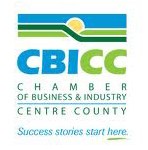From the desk of Paul Nichols: President of Financial Abundance Inc.
When it comes to making investment decisions, many consumers know they are ill prepared to do it themselves. That’s why you’re smart to turn to a financial advisor for help. A talented, dedicated advisor can help you develop a portfolio that’s suitable and appropriate for your situation, one that’s designed to meet your goals and can generate higher returns at lower risks– and with less work– than you are likely to obtain on your own.
But how much does it cost to work with a financial advisor? You should always ask how advisors are compensated. Unfortunately, if that’s all you ask, you might not be told the whole story. That’s because there’s often a big difference between what they earn and what you pay. Therefore, instead of asking, “What is your compensation?” you should ask “What are the total costs I will incur by working with you?”
You see, when your financial advisor provides you with a portfolio of funds, you’ll incur not one cost, but three. So it’s vital that you receive full disclosure — otherwise, you might end up paying far more than you should, and far more than you realize. First, of course, is the advisor’s fee. Know as an asset management fee, it is generally expressed as a percentage of assets. At some firms, the asset management fee is as high as 3% per year. Usually, one-fourth of the fee is debited from your account each quarter. But the asset management fee is not the only cost you’ll incur. In addition to paying for your advisor, you must also pay for the funds your advisor has recommended, and this is where you’ll find two other costs: fixed expenses and variable expenses.
Fixed expenses are included in something called the Annual Expense Ratio. Every mutual fund and exchange-traded fund charges this fee — even so-called “no-load” funds. (“No-load” means there are no commissions when you buy or sell shares; it does not mean “no fee.”) The expense ratio pays for the fund’s recurring operating costs, from the manager’s salary to the toll-free phone number investors call to talk to customer service representatives. According to Morningstar, the average expense ratio is 1.56% per year, although many are more than 2%.
Although the expense ratio is expressed as an annual figure, it’s actually debited on a daily basis. But fund investors never notice it, because the charge does not appear on monthly statements. To find it, you must look in the fund’s prospectus, where the expense ratio is expressed as a percentage.
Many investors — and, astonishingly, even some investment advisors — think the annual expense ratio covers all fund expenses. But it doesn’t. The expense ratio covers only perennial fixed costs — salaries, marketing, overhead and the like. But there are many variable costs to operating a fund, and these are excluded from the expense ratio.
The biggest variable costs are brokerage commissions and trading expenses. Whenever the fund manager buys or sells a security, he pays brokerage commissions — just like you would, if you were to buy or sell a stock or bond. Of course, funds pay lower commission rates than you would pay. Even so, considering that funds trade millions of shares representing billions of dollars in trading costs per year, and these expenses are not included in the Annual Expense Ratio or even disclosed in the prospectus. To find these and other expenses, you must look in the fund’s Statement of Additional Information.
I can tell you that most advisors themselves have never even heard of the SAI. Yet the fees it discloses can equal or even exceed the Annual Expense Ratio. Until recently, you had to ask fund companies to mail you their SAIs. But thanks to the Internet, you can now find these documents at most fund company Web sites.
SAI expenses are difficult to determine, but a 2007 analysis by Virginia Tech, the University of Virginia and Boston College revealed that the average SAI charge is 1.44% per year. This is in addition to the 1.56% charged by the average Annual Expense Ratio. In other words, the total charge of the average mutual fund is 3.00% per year.
By adding this to the advisor’s fee, you can see that ordinary investors often incur total annual costs of 4% per year.
So be careful when asking an advisor what he charges. If he says, “My fee is 1 percent,” he might be technically correct — although the claim would be omitting the Annual Expense Ratio and SAI charges that you’ll also incur. So when you are interviewing potential advisors, make sure they tell you the total costs you’ll pay to work with them.




 Clarity Coaching Tips
Clarity Coaching Tips Common Sense Videos
Common Sense Videos It’s Your Money
It’s Your Money
